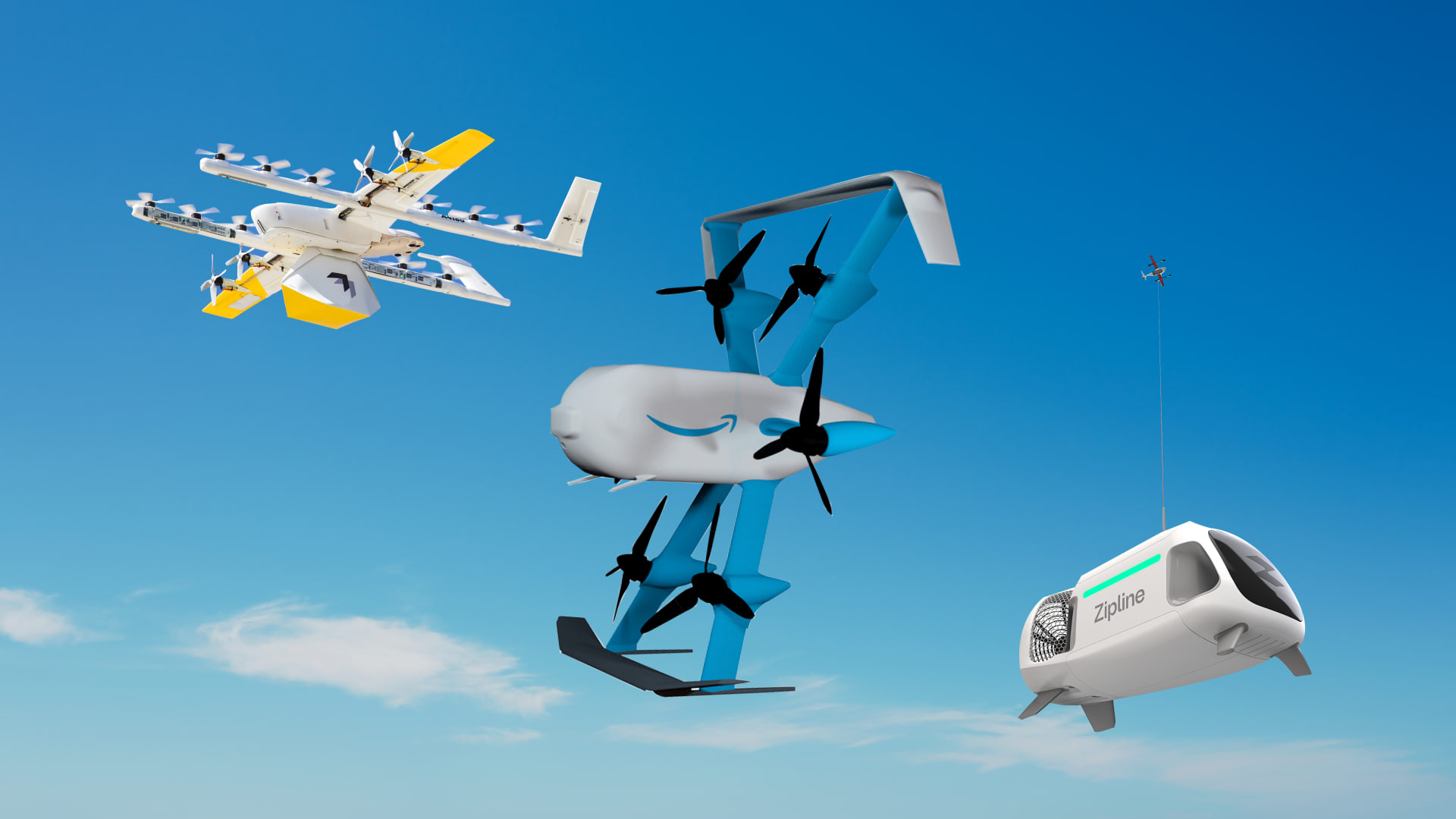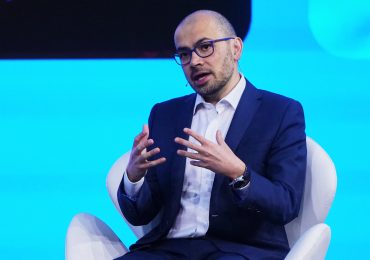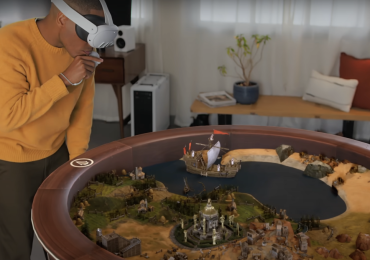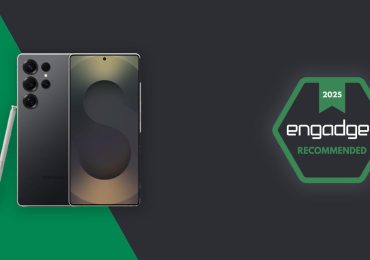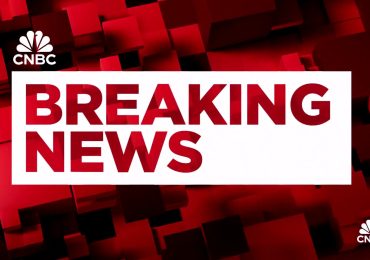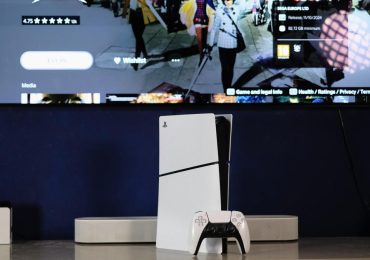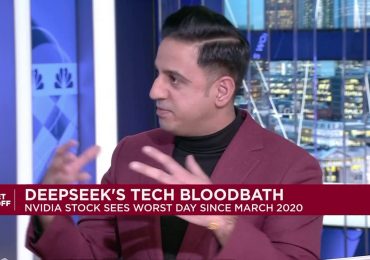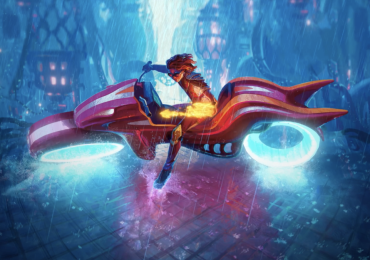An Amazon delivery drone is on display at Amazon’s BOS27 Robotics Innovation Hub in Westborough, Massachusetts, on Nov. 10, 2022.
Joseph Prezioso | AFP | Getty Images
On a recent weekday morning, John Case heard a familiar buzzing outside his quiet suburban home in College Station, Texas. He recognized it immediately as one of Amazon‘s Prime Air drones, whizzing by on its delivery route to unload small packages of batteries, vitamins and dog treats.
“It sounds like a giant hive of bees,” Case, a semi-retired orthodontist, said in an interview. “You know it’s coming because it’s pretty loud.”
Case has lived in College Station for the past 40 years. The drones are a common sight when he and his wife go on their regular walks around the neighborhood. Nurses, police officers and firefighters who work the nightshift talk about it disrupting their sleep during the day, Case said.
Noise complaints are just the latest challenge for Amazon’s drone program that’s been struggling to get off the ground since the company started testing deliveries in 2022. A mix of regulatory hurdles, missed deadlines and layoffs last year, coinciding with widespread cost-cutting efforts by CEO Andy Jassy, has halted progress of the ambitious service, which was conceived of by Amazon founder Jeff Bezos more than a decade ago.
College Station, located about 100 miles northwest of Houston, has been the main testing ground for Prime Air, as Amazon tries to show it can ferry packages by unmanned aircraft to residents’ homes in under an hour. Lockeford, California, south of Sacramento, was supposed to be another test market, but Amazon shuttered its operation there in April. The company is seeking approval from regulators to start deliveries in Tolleson, Arizona, west of Phoenix.
As Amazon prepares to scale up Prime Air and expand it to more areas, it’s encountering another reason why that won’t be so easy. In a July letter to the Federal Aviation Administration, College Station Mayor John Nichols wrote that residents in his city, home to Texas A&M University, have grown tired of the drones loudly buzzing near their homes.
“Since locating in College Station, residents in neighborhoods adjacent to Prime Air’s facility have expressed concern to the City Council regarding drone noise levels, particularly during take-off and landing, as well as in some delivery operations,” Nichols wrote.
Nichols’ letter followed a proposal from Amazon to the FAA to allow the company to increase deliveries to 469 flights per day, up from its current level of 200 flights per day. Amazon is asking for the ability to operate between 7 a.m. and 10 p.m., rather than being limited to daylight hours as the program is today, and to expand its delivery area to up to 174 square miles surrounding the company’s drone port, up from its current operating range of 44 square miles.
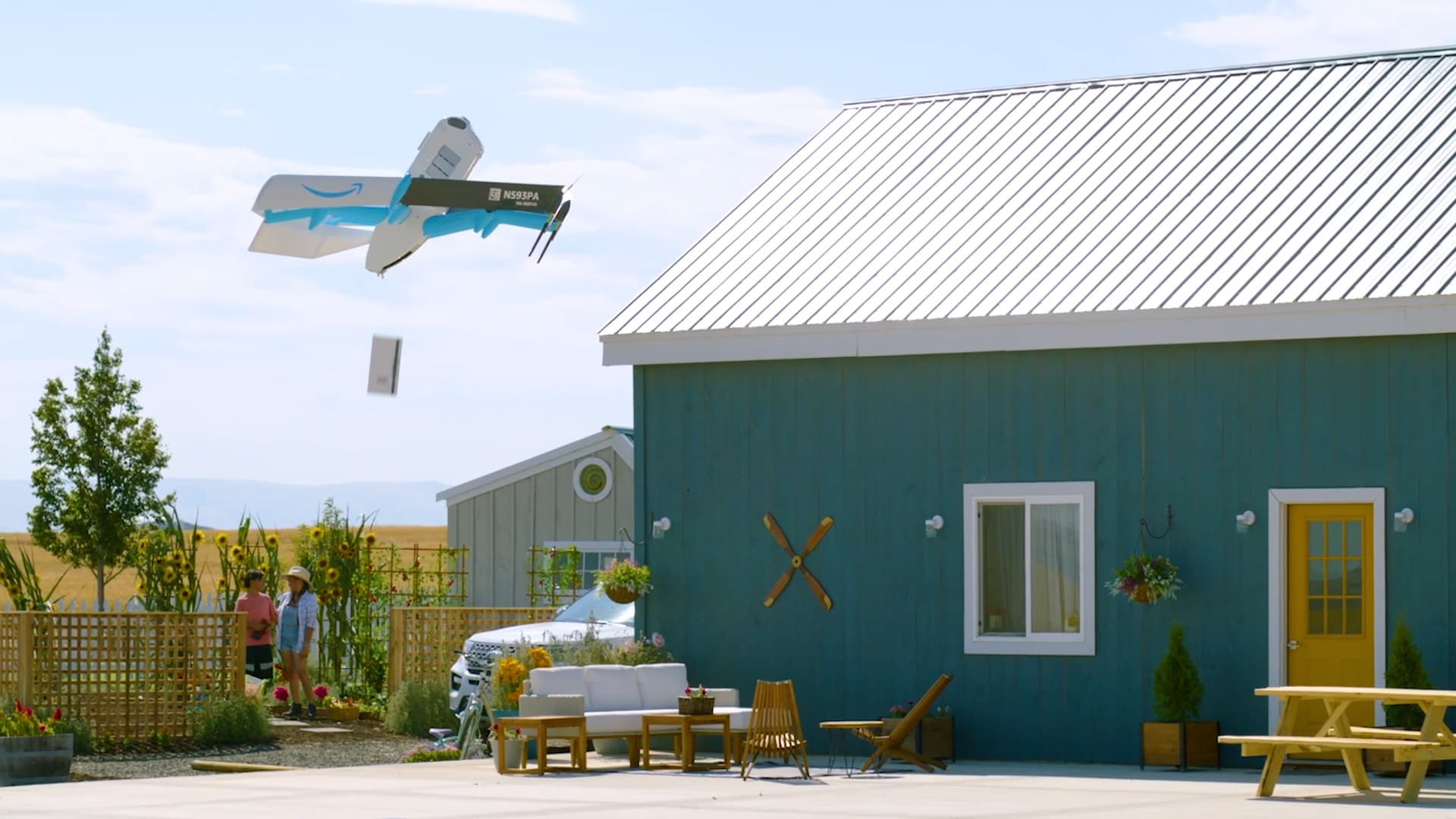
A month before Amazon’s request to the FAA, residents appealed to local legislators to intervene in the company’s expansion plans. At a city council meeting in June, Ralph Thomas Moore, whose neighborhood is “less than 500 feet away from the launch pad,” played a recording of a chainsaw to illustrate the noise level of the drones.
If Amazon gets its wish, there would be up to 940 combined takeoffs and landings, all so the drones can deliver one package at a time, weighing no more than five pounds, Moore said at the meeting.
“This is what Amazon is asking the FAA to approve,” he said. “This is a huge invasion of our personal space and has significant impact on everyone in the neighborhood.”
Bryan Woods, College Station’s city manager, said at the meeting that city officials ran tests of a Prime Air drone and found it had noise levels between 47 and 61 decibels. According to the Occupational Safety and Health Administration, chainsaws are typically measured at 125 decibels and heavy equipment at 95 to 110 decibels.
Prime Air is part of Amazon’s effort to find a quicker, more cost-effective solution for the so-called last mile, or the part of the delivery that gets the package from the warehouse to the customer’s doorstep. Proponents say drone delivery can potentially offset the cost of maintaining a fleet of delivery drivers, while cutting down on the need for gas-guzzling delivery vans. That’s assuming Amazon can ever turn it into a service for the masses.
In May, Amazon notched a key milestone when the FAA said it would allow the company to fly its delivery drones over longer distances and without staffers on the ground observing each flight. Amazon heralded the announcement and said it “lays the foundation” for the service to reach new markets.
Sam Stephenson, an Amazon spokesperson, told CNBC in a statement, “We appreciate the community of College Station and take local feedback into account wherever possible when making operational decisions for Prime Air. We’re proud of the thousands of deliveries we’ve made and the hundreds of customers we deliver to.”
‘Fantastic technology, wrong location’
Amina Alikhan likened the drones to “a fly coming by your ear over and over and you can’t make it stop.”
“It is waking us up and disrupting our ability to enjoy both our outdoor and even our indoor spaces,” said Alikhan, an internal medicine doctor who lives with her husband in a neighborhood a few hundred feet from Amazon’s drone airport in College Station.
Case said his neighbors have complained that the sound of the drones makes it hard to enjoy working in the yard or sitting on the patio. Sometimes it’s loud enough to be heard inside. Case said he wrote a letter to the College Station mayor and city council about the matter.
When the city agreed to be a test market for Amazon, “I think nobody really knew how noisy and annoying it was going to be” Case said.
Others said the drones fly alarmingly low. One resident, who serves as the head of a local homeowners association, said Amazon told those in the neighborhood that the drones would fly 400 feet or higher while in operation.
But the drones fly over residential properties at 100 feet or less, which can make it uncomfortable to even lounge by the pool, said the person, who asked not to be named to preserve her privacy.
Amazon unveiled its latest delivery drone at the re:MARS conference in Las Vegas on June 5, 2019.
Amazon
The current iteration of Amazon’s delivery drone typically cruises at an altitude of 160 to 180 feet, according to data submitted by the company to the FAA.
Amazon has said it plans to introduce a smaller, quieter drone, called the MK30, which is expected to start running in College Station and Phoenix once the company receives approval from the FAA.
Stephenson said the MK30 is “designed to reduce the drone’s perceived noise by almost half.” It will also fly at a higher cruising altitude of between 180 to 377 feet above ground level, except when descending to drop a package, according to the FAA.
But many residents wanted Amazon to go a step further and get out of their neighborhoods altogether. As concerns grew louder, leaders from Prime Air held a Zoom meeting on July 24 with College Station residents.
Matt McCardle, head of regulatory affairs and strategy for Prime Air, said at the meeting that the company would not renew its lease in College Station and move elsewhere by October 2025, according to a recording obtained by CNBC.
Amazon’s Stephenson confirmed that the company is “considering a variety of potential paths forward,” including the possibility of an alternate drone site.
The company has also agreed to reduce the number of flights per hour, said Bob Yancy, a College Station City Council member. He plans to propose that Amazon move its drone port to the site of a former Macy’s store that’s now owned by the city and located in a nearby shopping mall.
In April, Amazon said it plans to integrate Prime Air into its same-day delivery network, instead of building standalone drone facilities. That’s what the company is aiming to do in the Phoenix area, where its launchpad is expected to be on the same site as an Amazon warehouse known as SAZ2. A couple hundred feet from the facility is a major neighborhood called Roosevelt Park.
Yancy said at the meeting that he still likes the program, and appreciates that he’s been able to have toothbrushes, cookies and bottles of aspirin delivered to his house within an hour.
He wants Prime Air to stay in College Station. But for it to work, he said, Amazon will have to make its drones less noisy or get them far away from residents.
“I think the headline on the program is — fantastic technology, wrong location,” Yancy said.
WATCH: A decade in, Amazon’s made 100 drone deliveries.
